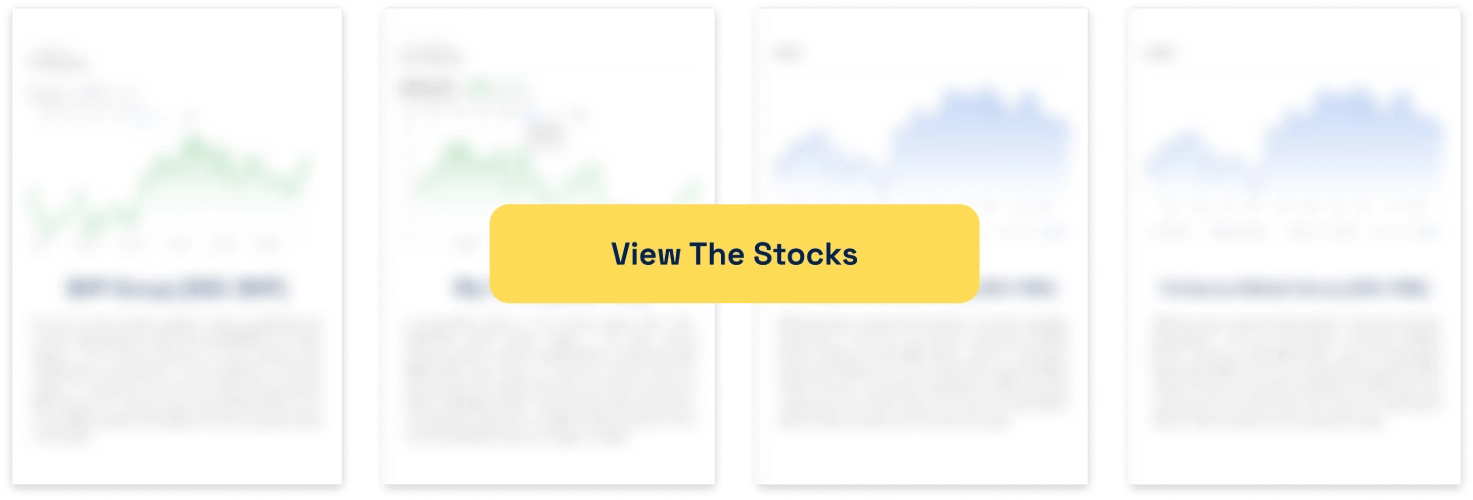Trump vs. Jerome Powell: What Happens to the Market If Powell Is Fired?
![]() Ujjwal Maheshwari, April 25, 2025
Ujjwal Maheshwari, April 25, 2025
The relationship between President Donald Trump and Federal Reserve Chair Jerome Powell has often been tumultuous, particularly around decisions regarding interest rates and monetary policies. Trump has repeatedly criticised Powell’s stance on rate hikes, viewing them as detrimental to the economy, while Powell has defended the Fed’s decisions based on the long-term health of the economy. What would happen if President Trump attempted to remove Powell from his post, given the current legal and political limitations? This question not only pertains to US domestic politics but also raises important considerations for global financial markets.
In this article, we explore the potential implications of such a move, specifically its effect on the stock market, interest rates, and investor sentiment, particularly from the perspective of the Australian market. Understanding these dynamics is crucial for investors as they navigate an increasingly uncertain global financial environment.
The Power of the Federal Reserve and Jerome Powell’s Role
The Federal Reserve’s Influence on Financial Markets
The Federal Reserve is a cornerstone of economic stability, not only for the US but also for the global financial system. Its decisions on interest rates, money supply, and inflation targets influence everything from domestic investment to global trade. Jerome Powell, as Chair of the Fed, plays a central role in these decisions. His actions directly affect market liquidity, bond yields, and investor expectations.
Powell’s primary responsibility is to steer the US economy towards stability by adjusting the federal funds rate, balancing inflation with employment. These decisions have far-reaching effects, not only on the US economy but also on global financial markets. A change in leadership at the Fed, especially one under politically motivated circumstances, could unsettle markets and disrupt the established economic order.
Jerome Powell’s Term and Political Tensions
Jerome Powell was appointed as Chairman of the Federal Reserve by President Trump in 2018, but their relationship quickly soured, especially when Powell continued to raise interest rates, which Trump opposed. While Trump’s criticisms of Powell’s decisions were public, the President cannot legally fire the Fed Chair without cause under the Federal Reserve Act. Powell serves a four-year term and can only be removed for cause, making it a complicated political and legal issue.
However, given past tensions between Trump and Powell, it raises the question of what the market response might be if Powell were pressured to resign or replaced after his term ends.
What Would Happen If Jerome Powell Were Fired?
Immediate Market Reactions: Volatility and Uncertainty
The immediate effect of Powell’s removal would likely be increased market volatility. Markets thrive on certainty, and the sudden uncertainty regarding the leadership of the Federal Reserve could result in panic selling, especially in the equity markets. Investors would likely question the independence of the Federal Reserve and whether future decisions would be driven by political considerations.
Stock markets, particularly in the United States, would experience sharp fluctuations as investors react to the perceived instability of the central bank. The US dollar might weaken due to fears that political interference could disrupt the Fed’s ability to make sound monetary policy decisions.
The Risk of Political Interference in Monetary Policy
A major concern that would arise from Powell’s removal would be the potential for political interference in monetary policy. The Federal Reserve is designed to operate independently, free from political pressures. This independence is essential for maintaining credibility and making decisions based solely on economic data rather than short-term political objectives.
If Powell’s removal were seen as a move to influence Fed policy for political gain, it could erode trust in the central bank’s ability to act in the economy’s best interests. In the long term, this could lead to higher inflation expectations, lower investor confidence, and potentially lower economic growth.
Impact on Interest Rates and Inflation
Under Powell’s leadership, the Fed has adopted a cautious approach to interest rate changes, aiming to strike a balance between supporting economic growth and controlling inflation. However, if Powell were replaced by a more politically driven figure, it could introduce significant uncertainty. For example, if the new Fed Chair adopted an aggressive monetary policy or, conversely, a more lenient one, it could disrupt the delicate balance Powell sought to maintain.
In particular, a politically motivated move to lower interest rates to boost short-term growth could create asset bubbles, while an overly hawkish approach could stifle economic activity. Both scenarios carry significant risks for investors.
Global Consequences: How Australia Could Be Affected
While the United States is the primary economy at risk, the global repercussions of a decision to fire Powell would be far-reaching. Australia’s financial markets, which are closely linked to the US economy, would also likely experience volatility. As an open economy, Australia’s stock markets often react to global financial shifts, and a US-driven market sell-off would likely lead to declines in Australian equities.
Moreover, any instability in the US dollar, a key global currency, could impact Australian businesses and investors who deal in USD. A weakened dollar could lead to higher import costs and greater uncertainty in global trade, impacting Australian companies, particularly those that rely on exports.
Could Trump’s Firing of Powell Lead to Market Instability?
Long-Term Economic Impact and Investor Sentiment
The longer-term impact of Trump firing Powell would depend on the replacement chosen and the subsequent decisions made by the Federal Reserve. If a new chair were appointed who pursued policies that investors saw as politically motivated or erratic, it could lead to a prolonged period of market instability.
Investor sentiment is often based on the perception of a central bank’s independence. A loss of confidence in the Federal Reserve’s ability to manage the economy effectively could lead to reduced investment, both domestically and abroad, hurting economic growth.
A Shift Toward Lower Investor Confidence
The Federal Reserve has historically been seen as a stabilising force in the US economy. If its leadership became politically charged, it could lead to a broader loss of investor confidence, with the potential for both domestic and foreign capital to retreat from the US. This could result in slower economic growth, fewer job opportunities, and an increase in financial risk.
Conclusion
The prospect of a forced departure or politically influenced replacement of Jerome Powell raises complex and potentially damaging concerns for both US and global markets. While the immediate reaction would likely be one of heightened volatility and uncertainty, the long-term impacts could be far-reaching. From a loss of confidence in the Federal Reserve to increased political interference in monetary policy, the consequences would be significant.
For investors, the key takeaway is that the stability of central banks is crucial for maintaining market confidence. The US Federal Reserve, under Jerome Powell’s leadership, has helped navigate a challenging economic environment, but any move that threatens its independence could lead to market instability, which would not only affect the US but also the Australian economy and investors.
What are the Best ASX Stocks to invest in?
Check our buy/sell tips
FAQs
- What would happen to the US stock market if Powell were fired?
The US stock market could experience increased volatility and uncertainty, particularly if the move is perceived as undermining the Federal Reserve’s independence.
- How could the firing of Powell affect interest rates?
A new Fed chair could pursue different interest rate policies, potentially causing inflationary pressures or economic instability if those policies are seen as too aggressive or too lenient. This could disrupt the balance Powell had tried to maintain.
- Would a change in the Fed Chair affect global markets?
Yes, given the global interconnectedness of financial markets, any significant change in US monetary policy could trigger market fluctuations worldwide. Countries like Australia, with strong ties to the US economy, could face stock market declines and disruptions in trade.
- Could Trump’s removal of Powell harm the credibility of the Federal Reserve?
Yes, removing a sitting Fed Chair for political reasons could harm the credibility and perceived independence of the Federal Reserve. This could lead to reduced trust in the institution, making it harder to implement effective economic policies in the future.
- How might Australian investors be impacted?
Australian investors may see increased market volatility, as the Australian economy is closely linked to the US. Changes in US monetary policy and the potential instability caused by the firing of Powell could negatively affect Australian stocks, foreign exchange rates, and global trade.
Blog Categories
Get Our Top 5 ASX Stocks for FY25
Recent Posts
4 Growing ASX Dividend Stocks to Buy and Hold for Steady Returns
Investing in dividend stocks remains a reliable strategy for Australians seeking steady income and long-term capital growth. But which ASX-listed…
3 ASX ETFs to Buy for Passive Income in May
Investing in exchange-traded funds (ETFs) on the Australian Securities Exchange (ASX) has become one of the most popular ways to…
The Alpha of a stock: Here’s why it is important for investors to know
The Alpha of a stock is another important investing metric that stock investors need to know about. In this article,…



